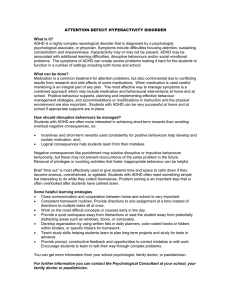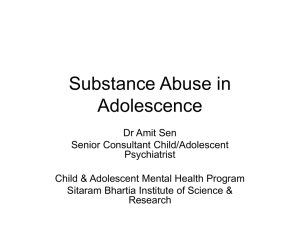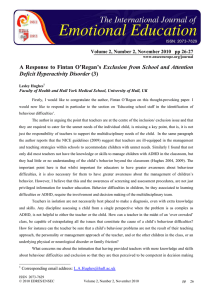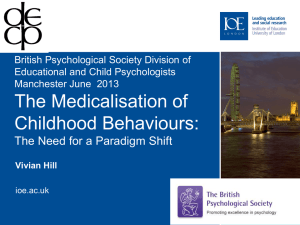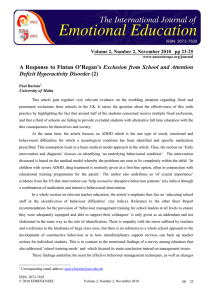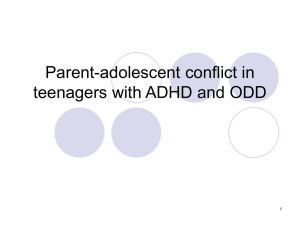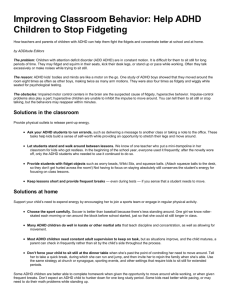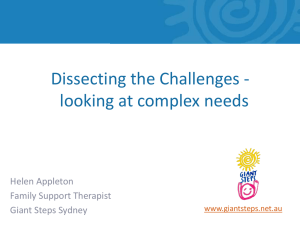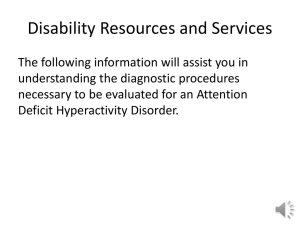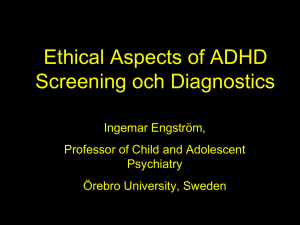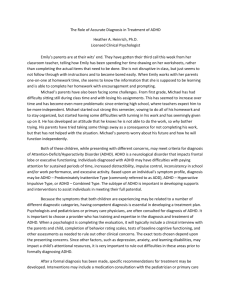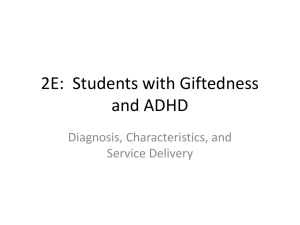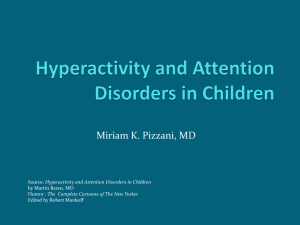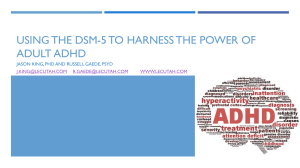Appendix B - The School Setting
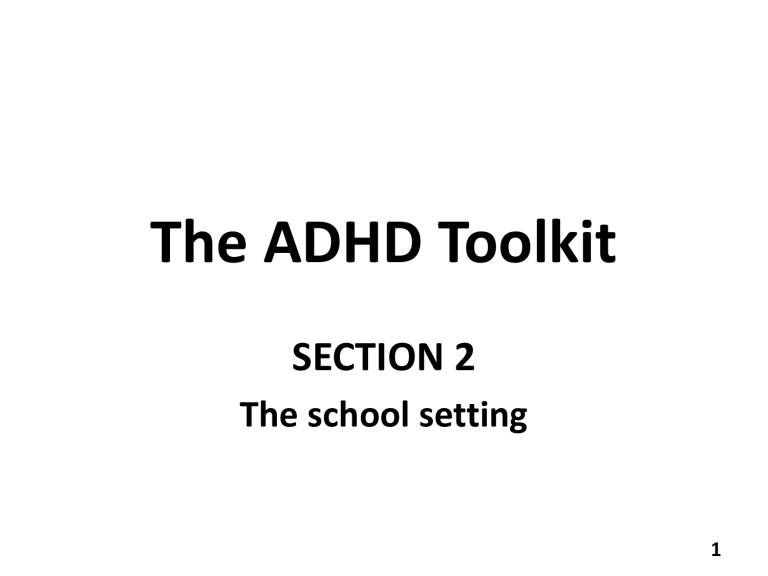
The ADHD Toolkit
SECTION 2
The school setting
1
Systematic classroom observation
(1) Fixed interval sampling (FIS)
• Target student only is observed
• Recordings are made of predominant behaviour at 15 second intervals
• Provides data on frequency and duration of behaviour
• Can be used in any setting for lessons of varying lengths
2
FIS data analysis
Carl, aged 10 years
No
ADHD
Date Context
Thur 4 Dec
13:54 –
35 minutes
Design Technology lesson
Half class (N = 12) working outside main classroom with teacher
Modifying model chassis, adding motor
88%
ADHD behaviours
Inatt’n Hyp-imp
9% 3%
Fri 15 Nov
10:20 –
28 minutes
Assembly
Whole school in hall
(N = 440 students, HT, teachers, TAs)
‘Children in Need’ day
28% 34% 38%
3
FIS data analysis
Carl, aged 9 years
No
ADHD
Context Date
Wed 25 Sep
11:00 –
60 minutes
Literacy lesson – group (N = 4)
Working with TA, SENCO
Six short, varied activities (very little writing involved)
88%
Mon 30
Sep
09:17 –
50 minutes
Numeracy lesson – group (N = 4)
Working with TA)
Number bonds to 10; addition and subtraction games
35%
ADHD behaviours
Inatt’n Hyp-imp
7%
21%
5%
44%
4
Systematic classroom observation
(2) Instantaneous time sampling (ITS)
• Target student and non-ADHD comparison are observed
• ‘Snapshot’ of behaviour recorded at 30second intervals
• Used over a ten-minute period (20 observations), or three periods in different parts of a lesson
5
Date, time at which
10-minute recording period began
ITS data analysis
Carl
(Target student)
Context, part of lesson
No
AD/
HD
ADHD behaviours
Inatt H/I
No
AD/
HD
Ian
(Comparison)
ADHD behaviours
Inatt H/I
History – 2 classes of 10 yr olds
Mon 15 Sep
13:36
13:57
14:28
Mon 25
Nov
14:00
14:24
14:44
Start – watch video
Middle – class discussion
End – writing, worksheets
Art – group (N = 5) in art area outside classroom
Start – apply hot wax to Batik
Middle – draw design on material
End – Reapply hot wax
18
17
18
16
3
5
1
3
2
1
8
12
1
0
0
3
9
3
19
16
19
20
11
13
1
4
1
0
6
7
0
3
0
0
0
0
6
Date, time at which
10-minute recording period began
ITS data analysis
Context, part of lesson
Science – class 10–11 yr olds, group
Thu 20 Nov
11:30
11:50
12:02
Start – Write up experiment 1
Middle – T introduces experiment 2
End – Experiment 2 – separating solids
Science – class 9–10 yr olds
Tues 15 Oct
14:03
14:27
14:40
Start – Devise tables ‘Changes’
Middle – Class discussion, ideas
End – Draw cross-section of fruit
Carl
(Target student)
No
AD/
HD
6
6
5
5
16
20
ADHD behaviours
Inatt H/I
5
7
9
12
4
0
9
7
6
3
0
0
No
AD/
HD
Ian
(Comparison)
ADHD behaviours
Inatt H/I
16
15
14
13
18
20
3
3
4
6
2
0
1
0
0
1
2
2
7
General classroom strategies
Refer to checklists in Chapter 6 for:
• Inattention:
Classroom layout
Sustaining attention
Time management and organisation
• Hyperactivity
• Impulsiveness
8
Behaviour management strategies
• Rules – consistent, positive, clearly displayed
• Involve pupils in deciding rewards and sanctions
• Remain calm, do not shout
• Model appropriate behaviour at all times
• Rewards – value good behaviour with rewards
• Reprimands – short and given at time of incident
• Interventions – time-out, ignore-rules-praise, token economies, behavioural contracts
• Positive behaviour-related comments to be made
4 times as often as negative comments
9
Associated difficulties
• Cognitive difficulties
• Affective difficulties:
Emotional immaturity
Social relationships
Self-esteem
• Other difficulties
10
